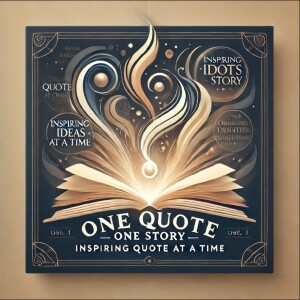

This podcast on the rainforest music of the BayAka was produced and presented by Jo Barratt
It is part of our series on ethnomusicology made with the sound archive of the Pitt Rivers Museum in Oxford.
In this podcast you'll hear the sound of the BayAka people of the Central African Republic. Specifically a collection of recordings made by Louis Sarno. All of these recordings, and more, are available on the Pitt Rivers Reel to Real sound archive website
In other programmes in the Pitt R...
This podcast on the rainforest music of the BayAka was produced and presented by Jo Barratt
It is part of our series on ethnomusicology made with the sound archive of the Pitt Rivers Museum in Oxford.
In this podcast you'll hear the sound of the BayAka people of the Central African Republic. Specifically a collection of recordings made by Louis Sarno. All of these recordings, and more, are available on the Pitt Rivers Reel to Real sound archive website
In other programmes in the Pitt Rivers series, we look at different aspects of ethnomusicology, but here we are taking an in-depth look at a single collection of sounds, the rainforest music of the Bayaka and, through it, telling some of the story of the BayAka people. Guiding us through this podcast is Noel Lobley from the Pitt Rivers Museum. The interviewer is social anthropologist Sarah Winkler Reid from the University of Bristol.
Here is Noel to introduce us to the man who made these recordings:
Noel Lobley: Louis Sarno is a guy from New Jersey who fell in love with the BayAka music from the rainforest of the Central African Republic/Northern Congo. He bought himself a one way ticket, a tape player, batteries and some spare tapes to record the music and more or less never came back. He became a part of the community and over the last 30 years has made the world's most important collection of BayAka music. It currently stands at about 1500 hours worth of music recorded. He has recorded every hunter-gather community and mapped its relationship to forest and the environment. He has gone from being a recorder to an advocate, living amongst the community and helps to mobilise healthcare.
BayAka singing has been well documented, but the instrumentation has not been looked at as much.
Amongst the community he has been living with, there is a beautiful four note flute called a mbyo (sometimes called mobio), it is made from climbing palm. A musician may play it for many reasons, sometimes for entertainment. But it is usually played at night, when the rest of the camp is asleep. They will wonder around the camp and it is played to enter your dreams. If you think about it, when you are asleep, the sound echoes around the canopy and the forest is sometimes described as a cathedral, due to the way the sound resonates. A musician may play at night for benediction, protection or for the camp.
Bear in mind Louis has recorded it in its context: its relationship to the rain forest, acoustic and environment. When you listen carefully, you can sometimes hear musicians playing against the canopy, so the overtones weave in and out as the musicians are playing. So sometimes it sounds like two people singing perfectly together.
You can hear the forest soundscape. You can hear the insects, and if it is a heavy sheet of insects, it can tell you whether it is late at night or early in the morning. Sometimes you can pick out the pulse of the insects the musicians are playing with. You can sometimes hear they are playing to a rhythmical structure that is in the forest. The music is very much of the forest and a gift for the forest. Most of these instruments are made from the forest. It sounds very much to me like an exploration of the acoustic properties of the forest.
In this community, it is not played any more. Over the time Louis has been there, there were three master musicians, but they have all died. The last player who played this, and who knew how to make the flutes gave one to Louis to look after. Louis says he never hears it played anymore. No one knows how to make it, or which particular plant is needed to make it. He looked after the last flute (mbyo) in Yanduombe and it was on its way to us in April earlier this year. There has been oucoup d'état in the Central African Republic. Seleka Rebels have overthrown the government. President Bozize has fled. Rebels have overtaken the capital. In April last year, Louis posted from the Central African Republic...
View more
Comments (3)
More Episodes
All Episodes>>You may also like
Create Your Podcast In Minutes
- Full-featured podcast site
- Unlimited storage and bandwidth
- Comprehensive podcast stats
- Distribute to Apple Podcasts, Spotify, and more
- Make money with your podcast
It is Free












